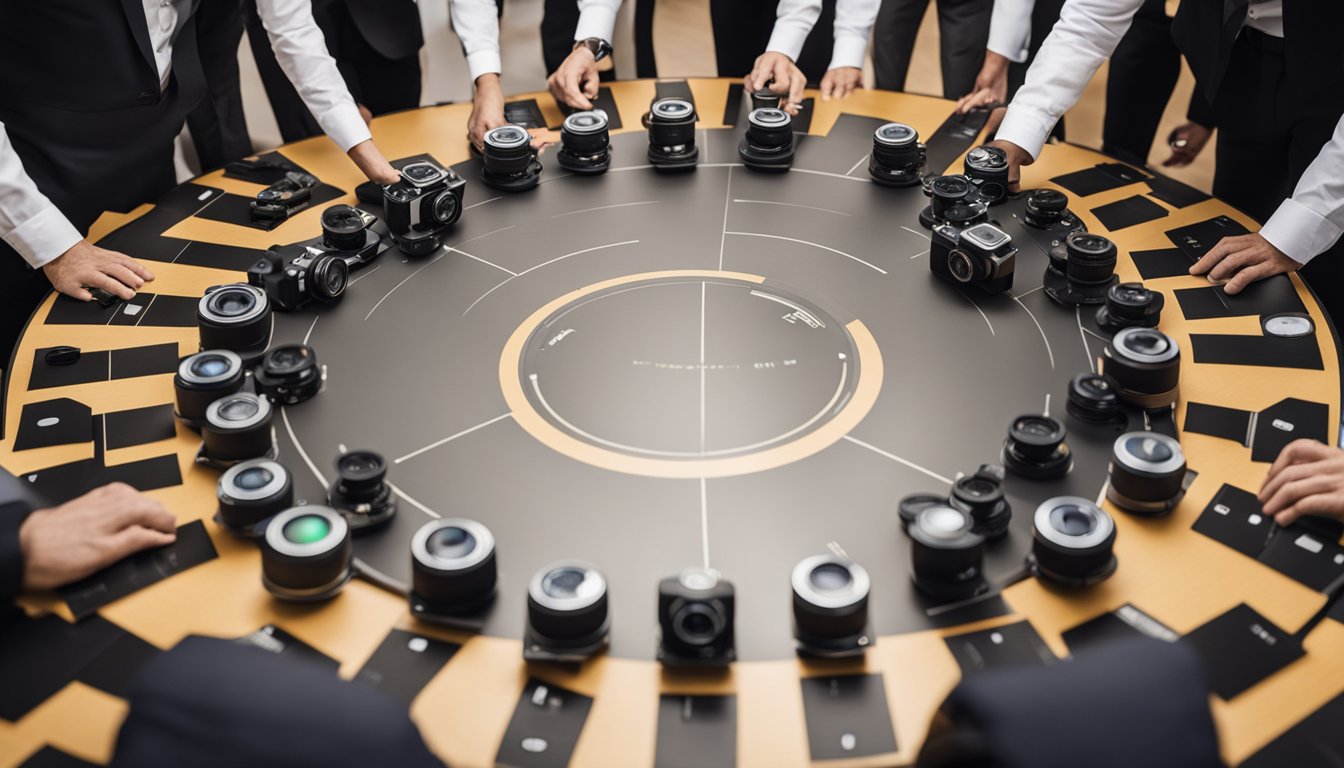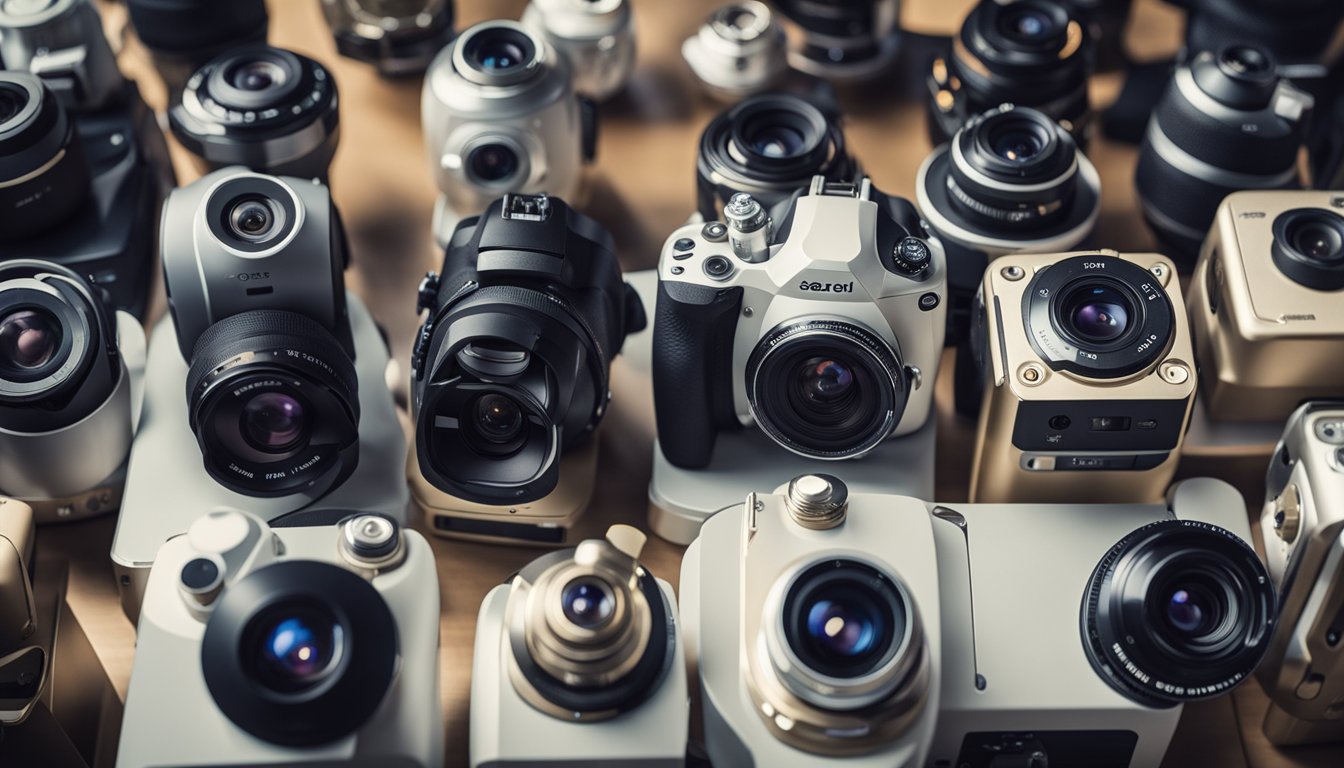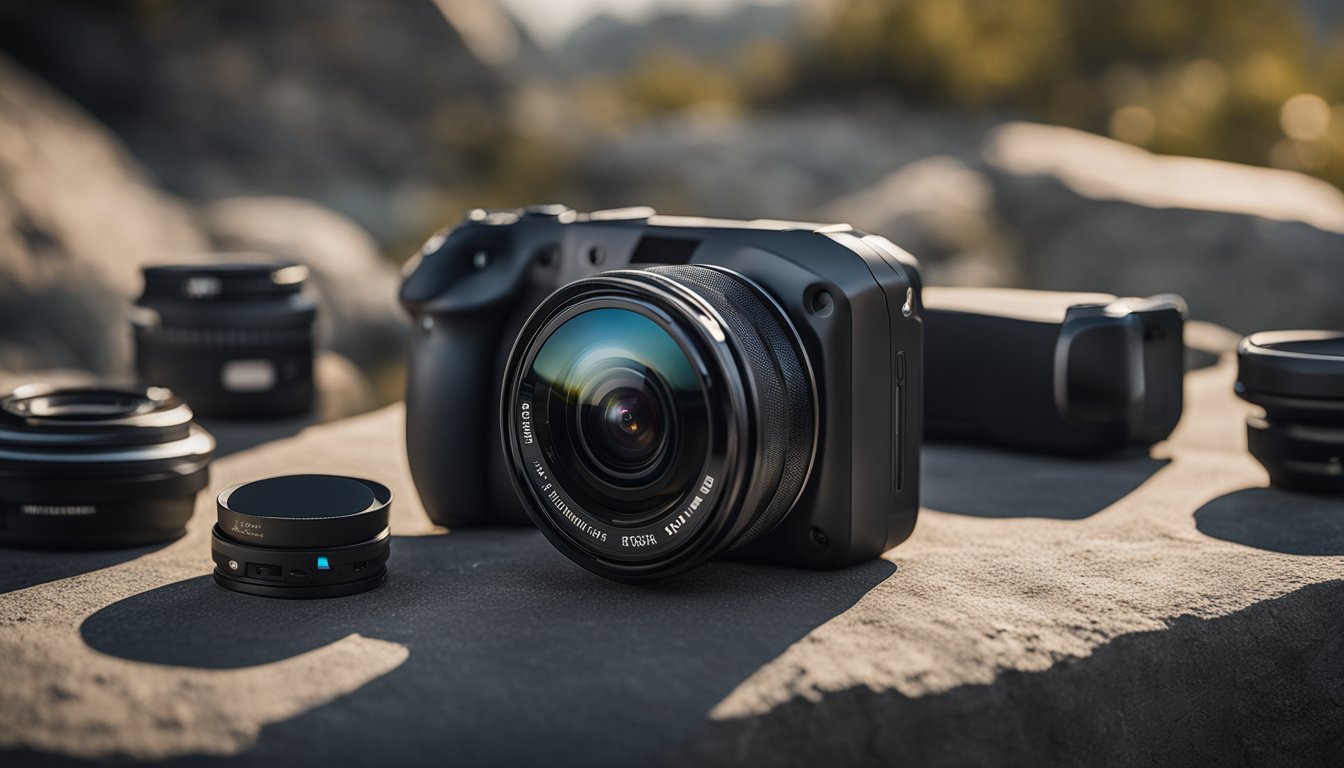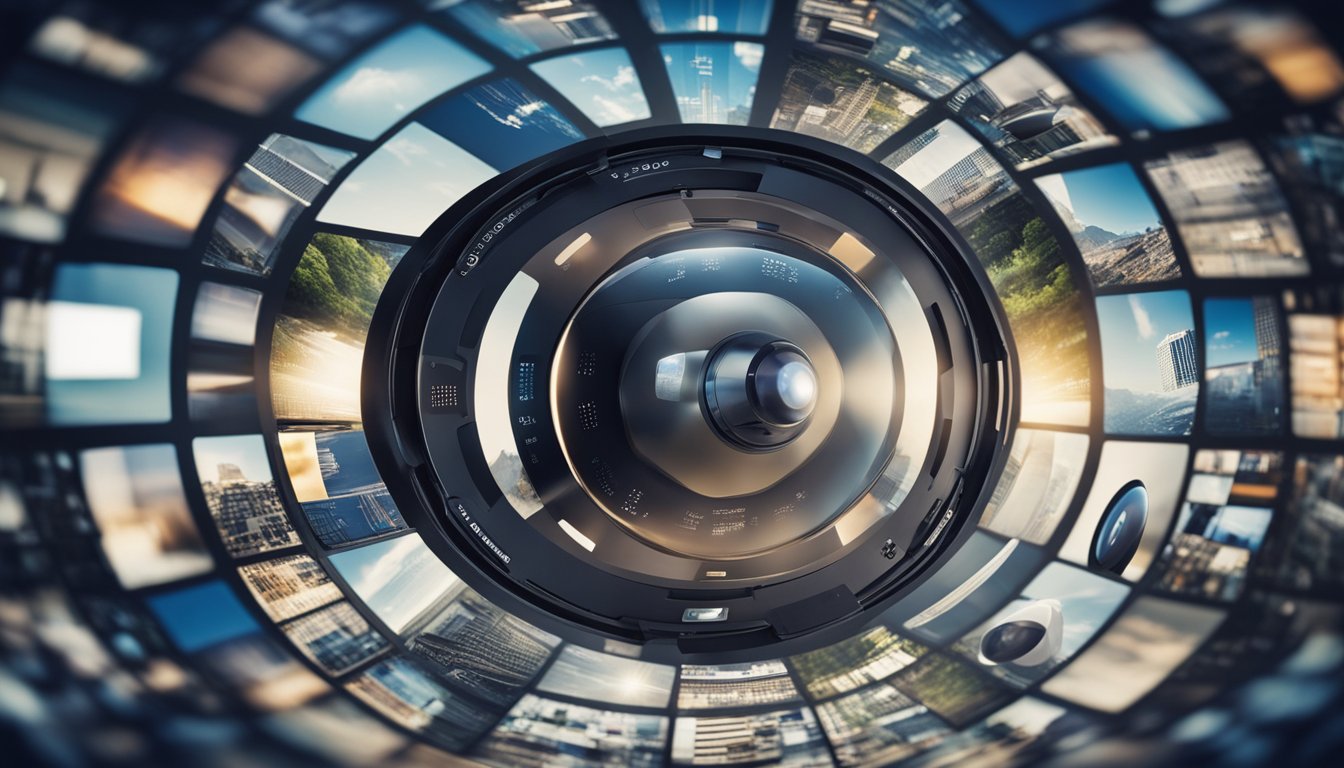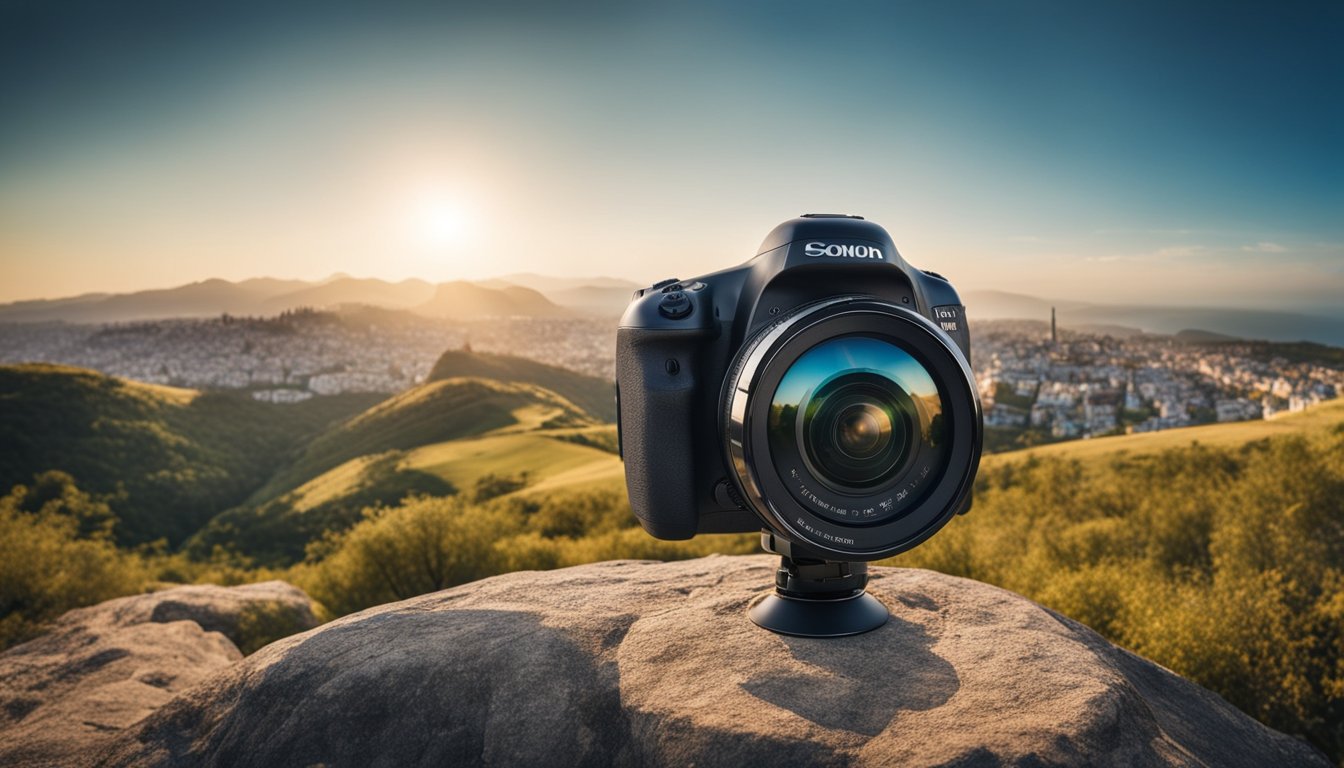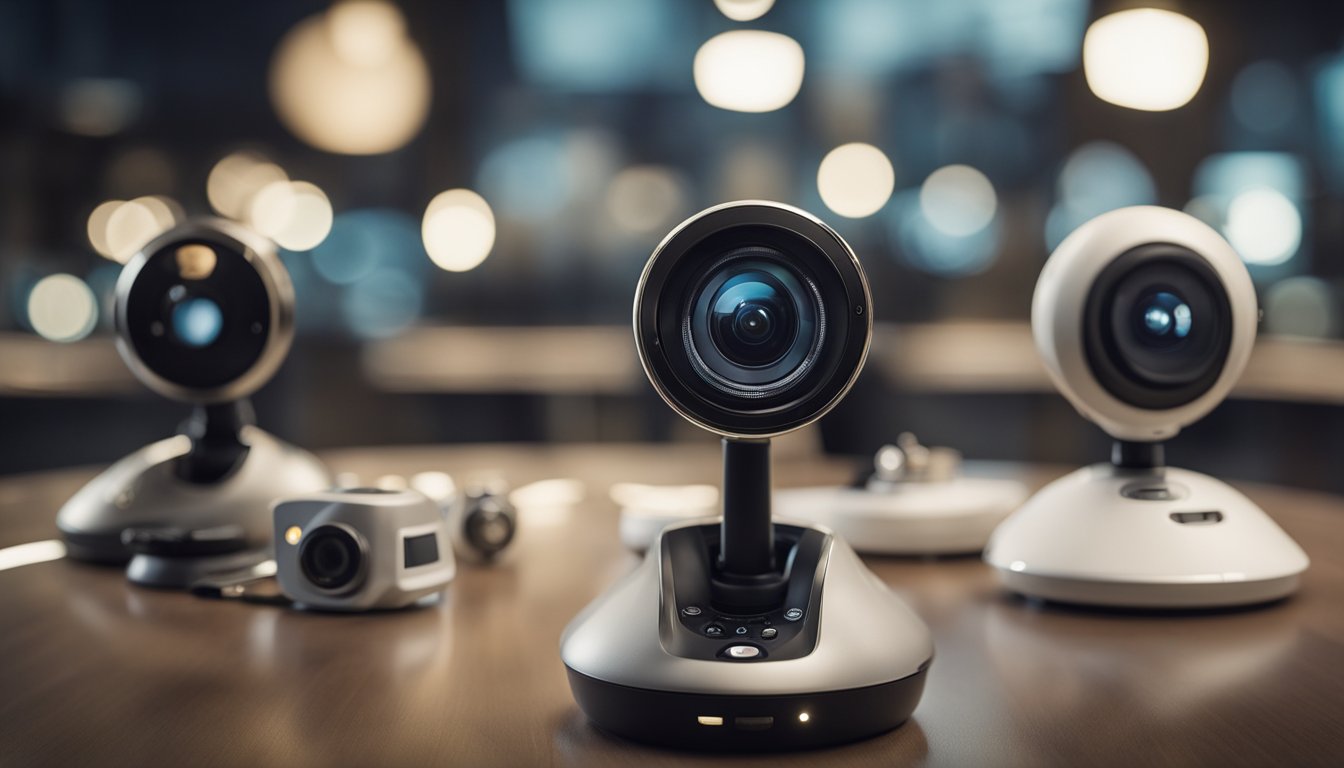If you’re looking to capture all angles of a moment or scene, a 360-degree camera might be the perfect tool for you. These cameras capture a full view of the environment around them, allowing you to relive the moment in a more immersive way. But with so many models on the market, it can be difficult to know which one is right for you. In this article, we’ll break down the key features and considerations to keep in mind when comparing 360-degree cameras.
When it comes to 360-degree cameras, there are a few important factors to consider. Resolution is a key consideration, as it affects the quality of the final image or video. Durability and design are also important, as these cameras are often used in outdoor or adventurous settings. Additionally, you’ll want to think about the camera’s performance in various conditions, as well as any accessories or software that can enhance your experience. By understanding these factors and more, you can make an informed decision when it comes to choosing the right 360-degree camera for your needs.
Key Takeaways
- 360-degree cameras capture a full view of the environment around them, allowing for a more immersive experience.
- Key features to consider when comparing 360-degree cameras include resolution, durability and design, performance in various conditions, and software and accessories.
- By understanding these factors and more, you can choose the right 360-degree camera for your needs and expand into new realms of photography and videography.
Understanding 360 Degree Cameras
https://www.youtube.com/watch?v=xqWkJJOcU4g&embed=true
If you are looking for a camera that can capture everything around you, then a 360-degree camera might be just what you need. 360-degree cameras are designed to capture images and videos in a way that allows you to see everything around you, creating an immersive experience that is perfect for virtual reality (VR) and 3D content.
One of the key features of 360-degree cameras is their ability to capture 360-degree video, which is a type of video that allows you to see everything around you in a single shot. This type of video is perfect for creating immersive experiences that make you feel like you are actually there.
360-degree cameras come in many different shapes and sizes, but they all work in a similar way. They use multiple lenses to capture images and videos from different angles, which are then stitched together to create a seamless 360-degree view.

When it comes to choosing a 360-degree camera, there are a few things to consider. First, you will want to look at the resolution of the camera. Higher resolution cameras will generally produce better quality images and videos, but they can also be more expensive.
Another thing to consider is the ease of use of the camera. Some cameras are designed to be very user-friendly, while others may require more technical knowledge to operate.
Overall, 360-degree cameras are a great way to capture immersive content that can be used for VR, 3D, and other applications. Whether you are a professional photographer or just looking to capture some fun memories, a 360-degree camera is definitely worth considering.
Key Features to Consider
When comparing 360-degree cameras, there are several key features that you should consider to ensure that you get the best camera for your needs.
Resolution and Video Quality
« How to Unlink Realme 360 Camera: A Quick Guide
Insta 360 for Sale: Get Your Hands on the Best 360-Degree Camera Today! »
One of the most important factors to consider when choosing a 360-degree camera is the resolution and video quality. Cameras with higher resolution will capture more detail and produce better image quality. Some of the popular resolutions for 360-degree cameras include 4K, 5.7K, and 8K. Higher resolution cameras tend to be more expensive, but they offer better image quality.
Design and Build
The design and build of a 360-degree camera is also an important consideration. Cameras that are waterproof and rugged are ideal for outdoor use, while smaller and lighter cameras are more portable. Some cameras also come with touchscreens for easy navigation, while others have physical buttons.
Camera Lenses and Image Stabilization
The camera lenses and image stabilization are also important features to consider. A camera with multiple lenses will capture more detail and produce better image quality. Image stabilization is also important for reducing camera shake and producing smoother video footage.
Battery and Power Management
Battery life and power management are important considerations when choosing a 360-degree camera. Cameras with longer battery life are ideal for extended use, while cameras with efficient power management will last longer on a single charge.
Storage Options
Storage options are also important when choosing a 360-degree camera. Cameras with microSD or SD card slots offer expandable storage options, while cameras with built-in storage may have limited space.
Connectivity and Software
Finally, connectivity and software are important considerations when choosing a 360-degree camera. Cameras with Wi-Fi connectivity can be easily connected to your smartphone or tablet, while cameras with dedicated apps offer additional features and functionality. It is important to choose a camera with software that is compatible with your device’s operating system, whether it is iOS or Android.
By considering these key features, you can choose the best 360-degree camera for your needs.
Popular 360 Camera Models
https://www.youtube.com/watch?v=YdUrUaRGaHU&embed=true
If you’re looking for a 360 camera, you have many options to choose from. In this section, we’ll take a look at some of the most popular 360 camera models available today.
GoPro Max and Insta360 Comparisons
GoPro Max and Insta360 are two of the most popular 360 camera brands. Both offer high-quality cameras that are perfect for capturing action shots. The GoPro Max is a popular choice for those who want a durable action cam that can handle extreme conditions. It can shoot 360-degree video at up to 5.6K resolution and has built-in stabilization to keep your footage steady. On the other hand, the Insta360 One R and Insta360 X3 are great options for those who want a versatile 360 camera that can be used for a variety of purposes. Both cameras offer excellent image quality and a range of features, such as slow-motion and time-lapse modes.
Emerging 360 Camera Brands
While GoPro and Insta360 are the most well-known 360 camera brands, there are several emerging brands that are worth considering. Ricoh is one such brand, with its Theta Z1 and Theta X models. The Theta Z1 is a high-end 360 camera that can shoot 23-megapixel still photos and 4K video. It also has a built-in OLED screen and manual controls for advanced users. The Theta X, on the other hand, is a more affordable option that is perfect for beginners. It can shoot 4K video and has a slim, pocketable design.
Another emerging brand is Kandao, with its QooCam 8K and QooCam 3 models. The QooCam 8K is one of the highest resolution 360 cameras available, with the ability to shoot 8K video and 12-megapixel still photos. It also has a built-in screen and a range of features, such as time-lapse and slow-motion modes. The QooCam 3 is a more affordable option that can shoot 4K video and has a compact, pocketable design.
Samsung Gear 360 is another popular 360 camera brand that is worth considering. The Gear 360 can shoot 4K video and has a range of features, such as live streaming and time-lapse modes. It also has a durable, water-resistant design that is perfect for outdoor adventures.
Resolution Explained
https://www.youtube.com/watch?v=CD0QS6xd2D0&embed=true
When it comes to 360-degree cameras, resolution is an important factor to consider. In simple terms, resolution refers to the number of pixels that make up an image or video. The higher the resolution, the more detail and clarity you can expect from your footage.
From Full HD to 8K
360-degree cameras come in a range of resolutions, from Full HD (1080p) to 8K. Full HD is the most common resolution for 360-degree cameras, and it can produce decent quality footage. However, if you want to capture more detail, you should consider a camera with a higher resolution.
1440p and 4K are popular resolutions for 360-degree cameras. They offer more detail than Full HD, but they also require more storage space and processing power. If you want to capture the highest quality footage possible, you should consider a camera with a resolution of 5.7K or higher.
The highest resolution currently available for 360-degree cameras is 8K. Cameras with this resolution can produce incredibly detailed footage, but they are also more expensive and require more storage space and processing power.
Stills and Video Capabilities
When comparing 360-degree cameras, it’s important to consider both the stills and video capabilities. Some cameras may have a high video resolution but a lower stills resolution, or vice versa.
For example, the QooCam 8K is known for its high-quality stills and video footage. It has a resolution of 8K for video and 12K for stills, which means you can capture incredibly detailed footage in both formats.
Other cameras, such as the GoPro MAX, have a lower resolution of 5.6K for video and 16.6MP for stills. While this may not be the highest resolution available, it still produces high-quality footage that is suitable for most applications.
In summary, when choosing a 360-degree camera, you should consider the resolution, image quality, video and stills capabilities, and storage requirements. By understanding these factors, you can choose a camera that meets your needs and produces high-quality footage.
Durability and Design
When it comes to 360-degree cameras, durability and design are important factors to consider. You want a camera that can withstand the elements and is easy to use on the go. Here are some things to keep in mind when evaluating the durability and design of a 360-degree camera.
Rugged and Waterproof Options
If you plan on using your 360-degree camera for outdoor activities or in wet conditions, you’ll want to look for a camera that is rugged and waterproof. Cameras like the GoPro Max and Insta360 ONE RS Twin Edition are designed to be tough and can handle drops, bumps, and water. These cameras are perfect for activities like hiking, skiing, and surfing.
Portability and Ease of Use
Another important factor to consider is portability and ease of use. You want a camera that is small and lightweight enough to take with you wherever you go. The Ricoh Theta X and Kandao QooCam 3 are both compact and easy to carry around. Additionally, you want a camera that is easy to use and doesn’t require a lot of setup. Cameras like the Insta360 X3 and Insta360 ONE RS 1-Inch 360 Edition are designed to be user-friendly and intuitive.
When evaluating the design of a 360-degree camera, you’ll also want to consider factors like size and weight. A smaller, lighter camera will be easier to carry around and use on the go. Additionally, you’ll want to look for a camera that is easy to use and doesn’t require a lot of setup. By considering these factors, you can find a 360-degree camera that is both durable and easy to use.
Performance in Various Conditions
When comparing 360 cameras, it’s important to consider how they perform in various conditions. Here are some factors to keep in mind when evaluating their performance:
Low Light and Dynamic Range
If you’re planning on shooting in low light conditions or want to capture a wide range of lighting conditions, you’ll want to pay attention to the camera’s dynamic range. Cameras with a high dynamic range will be able to capture more detail in both bright and dark areas of the image, resulting in a more balanced exposure.
Some cameras, such as the Ricoh Theta Z1, are designed specifically for low light conditions. They feature larger sensors and wider apertures, which allow them to capture more light and produce better quality images in dimly lit environments.
Adventure and Action Ready
If you’re planning on using your 360 camera for adventure sports or other action-packed activities, you’ll want to look for a camera that is rugged and durable. Some cameras, such as the GoPro Max, are designed specifically for this purpose, with waterproof and shockproof housings that can withstand a variety of extreme conditions.
In addition to durability, you’ll also want to look for a camera that can capture high-quality video and images at high speeds. Cameras with higher frame rates will be able to capture more detail in fast-moving scenes, resulting in smoother, more immersive footage.
Overall, when evaluating the performance of 360 cameras, it’s important to consider your specific needs and use cases. By paying attention to factors such as low light performance and durability, you’ll be able to find a camera that can capture stunning 360-degree images and video in a variety of conditions.
Camera Accessories and Expansion
https://www.youtube.com/watch?v=Bee3ycTjI1Q&embed=true
When it comes to 360-degree cameras, there are a variety of accessories and add-ons that can help enhance your experience. In this section, we’ll take a look at some must-have add-ons and ways to enhance your camera’s capabilities.
Must-Have Add-Ons
One essential accessory for any 360-degree camera is a tripod. A tripod will help you keep your camera steady and level, which is important for capturing high-quality footage. Look for a tripod that is sturdy, lightweight, and easy to use.
Another useful accessory is a selfie stick. A selfie stick can help you capture footage from unique angles and perspectives. Some 360-degree cameras even come with an invisible selfie stick, which allows you to capture footage without the stick appearing in the shot.
Enhancing Your Camera’s Capabilities
If you’re looking to expand your camera’s capabilities, consider investing in accessories that are designed specifically for your camera. Some cameras have a modular design, which allows you to add on different lenses and accessories.
For example, the Insta360 ONE R 1-inch 360 Edition has a modular design that allows you to switch between a 360-degree camera, a 4K wide-angle camera, and a 1-inch sensor camera. This gives you more flexibility and control over your footage.
Another way to enhance your camera’s capabilities is to invest in software or editing tools. Some cameras come with built-in editing software, while others require you to use third-party software. Look for software that is user-friendly and offers a wide range of editing options.
Overall, there are a variety of accessories and add-ons that can help you get the most out of your 360-degree camera. Whether you’re looking to capture footage from unique angles or enhance your camera’s capabilities, there’s an accessory out there that can help.
Software and Application Integration
When it comes to choosing a 360-degree camera, software and application integration is one of the most important factors to consider. Here are some of the things you should look for in a camera’s software and application integration:
Editing and Sharing Made Simple
One of the biggest advantages of using a 360-degree camera is the ability to create immersive videos and images. However, editing and sharing these files can be a challenge if the software is not user-friendly. Look for cameras that come with editing and sharing software that is easy to use and intuitive. Some cameras even come with built-in editing tools that allow you to trim, crop, and add effects to your footage.
Compatibility with Devices
Another important factor to consider is the camera’s compatibility with different devices. Ideally, you want a camera that can be easily connected to your smartphone or tablet, allowing you to control the camera and view your footage in real-time. Look for cameras that come with dedicated apps for both Android and iOS devices. Additionally, you should check if the camera supports Wi-Fi connectivity, which allows you to easily transfer files to your computer or upload them to the cloud.
Overall, when choosing a 360-degree camera, make sure to consider the software and application integration to ensure that you have a seamless experience when editing, sharing, and streaming your videos and images. With the right camera and software, you can create stunning virtual tours, live streams, and YouTube videos that will impress your audience.
Choosing the Right Camera for You
https://www.youtube.com/watch?v=5MvtlBYOFHg&embed=true
When it comes to buying a 360-degree camera, there are a lot of options available in the market. With so many different features and price points, it can be overwhelming to choose the right one for your needs. Here are some factors to consider when selecting a 360 camera.
Budget-Friendly Picks
If you’re on a tight budget, there are still plenty of options available that won’t break the bank. Some budget-friendly picks include the Insta360 ONE X2, Ricoh Theta SC2, and GoPro MAX. These cameras are easy to use and provide decent image quality for the price.
Top Picks for Beginners
If you’re new to 360 cameras, you’ll want to look for a camera that’s easy to use and has a user-friendly interface. Some top picks for beginners include the Insta360 ONE R, Kandao QooCam 8K, and Vuze XR. These cameras offer great image quality and are perfect for those just starting out with 360 photography.
Professional Grade Choices
If you’re a professional photographer or videographer, you’ll want a camera that can deliver the highest quality images and videos. Some professional-grade choices include the Insta360 Pro 2, Z Cam S1 Pro, and Kandao Obsidian R. These cameras offer advanced features and high-end image quality, but they come with a higher price tag.
No matter what your budget or skill level, there’s a 360 camera out there that’s perfect for you. Consider your needs and the features that are most important to you before making your purchase.
Expanding into New Realms
As a content creator, you are always looking for new ways to engage your audience. With the rise of virtual reality (VR) and 360-degree content, you have the opportunity to take your audience to new and exciting places.
Virtual Reality and 360 Content
VR and 360-degree content are becoming increasingly popular, and for good reason. They provide an immersive experience that traditional video simply cannot match. By using a VR camera or a 360 camera, you can capture your surroundings in stunning detail and allow your audience to explore them in a way that feels like they are really there.
One of the most exciting applications of VR and 360-degree content is virtual tours. With a VR camera, you can create a virtual tour of a location, allowing your audience to explore it as if they were physically there. This is perfect for real estate agents, who can use virtual tours to showcase properties to potential buyers.
Drones and 360 Cameras
Another way to expand your horizons as a content creator is to combine drones with 360 cameras. This combination allows you to capture stunning aerial footage in 360 degrees. By using a drone, you can get a unique perspective on your surroundings, and by using a 360 camera, you can capture everything around you.
This combination is perfect for creating all-in-one solutions for clients who need both aerial footage and 360-degree footage. For example, a hotel might want a promotional video that showcases both the interior and exterior of the property. By using a drone and a 360 camera, you can capture everything in one shot.
In conclusion, VR, virtual tours, and drones are just a few of the many ways that you can expand your horizons as a content creator. By using a 360 camera, you can capture stunning footage that will take your audience on a journey they will never forget.
Final Thoughts on 360 Degree Camera Comparison
Choosing the best 360-degree camera can be a daunting task, especially with so many options available in the market. However, with a little research and understanding of your needs, you can easily find the right camera that meets your requirements.
When comparing 360-degree cameras, it is important to consider factors such as video and photo resolution, stitching quality, ease of use, and battery life. You should also look for features like image stabilization, live streaming, and compatibility with different platforms.
Based on our research, some of the best 360-degree cameras available in 2023 include the Insta360 X3, GoPro Max, Ricoh Theta X, and Insta360 ONE RS 1-Inch 360 Edition. These cameras offer high-quality video and photo resolution, excellent stitching quality, and a range of features that make them ideal for different use cases.
Another important consideration when choosing a 360-degree camera is the price. While some cameras may be more expensive than others, it is important to remember that the most expensive camera may not always be the best option for you. Look for cameras that offer the best value for your money and are within your budget.
Overall, when comparing 360-degree cameras, it is important to consider your needs and budget, as well as the features and capabilities of each camera. By doing so, you can find the right camera that meets your requirements and allows you to capture stunning 360-degree content.
Frequently Asked Questions
What features are essential for a top-performing low light 360 camera?
When looking for a 360 camera that excels in low light conditions, you should consider the aperture size and ISO range. A wider aperture (lower f-number) allows more light to enter the camera, resulting in better low-light performance. Similarly, a higher ISO range allows the camera to capture more light in low light conditions. Additionally, some cameras come with built-in image stabilization to reduce the effects of camera shake in low light conditions.
How do I choose the best 360 camera for capturing car interiors?
When choosing a 360 camera for capturing car interiors, you should look for a camera with a wide field of view and good image stabilization. A wide field of view will allow you to capture more of the car’s interior in a single shot, while image stabilization will ensure that your footage is smooth and stable even when driving on bumpy roads.
What are the price ranges for quality 360 degree cameras?
The price of 360 cameras can vary widely depending on the features and quality you’re looking for. Entry-level cameras can be found for around $100, while high-end professional cameras can cost several thousand dollars. Generally, mid-range cameras with good image quality and features can be found in the $300-$500 range.
What should I consider when looking for a 360 degree camera for security purposes?
When looking for a 360 degree camera for security purposes, you should consider the camera’s field of view, resolution, and connectivity options. A camera with a wide field of view will allow you to monitor a larger area, while a higher resolution will provide clearer images. Additionally, cameras with Wi-Fi or cellular connectivity will allow you to monitor your property remotely.
What are the best 360 cameras available for creating virtual tours?
When creating virtual tours, you should look for a camera with high resolution and good image quality, as well as features like HDR and image stabilization. Some popular options for creating virtual tours include the Insta360 ONE X2, the Ricoh Theta Z1, and the GoPro MAX.
Which 360 camera offers the best experience for motorcycle enthusiasts?
When looking for a 360 camera for motorcycle enthusiasts, you should consider factors like durability, ease of use, and compatibility with helmet mounts. Some popular options for motorcycle enthusiasts include the GoPro MAX, the Insta360 ONE R, and the Garmin VIRB 360. These cameras are designed to withstand the rigors of outdoor use and can be easily mounted on helmets or other gear.

